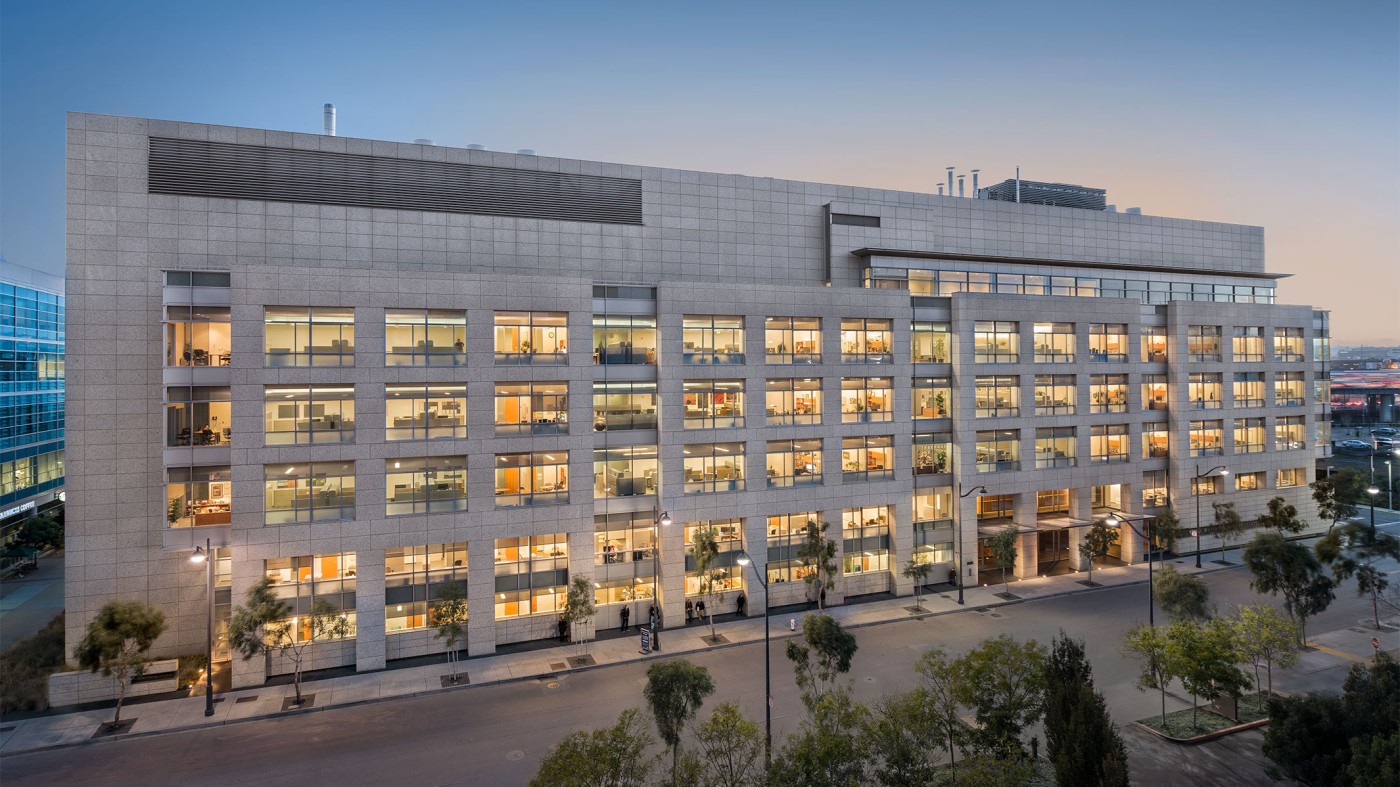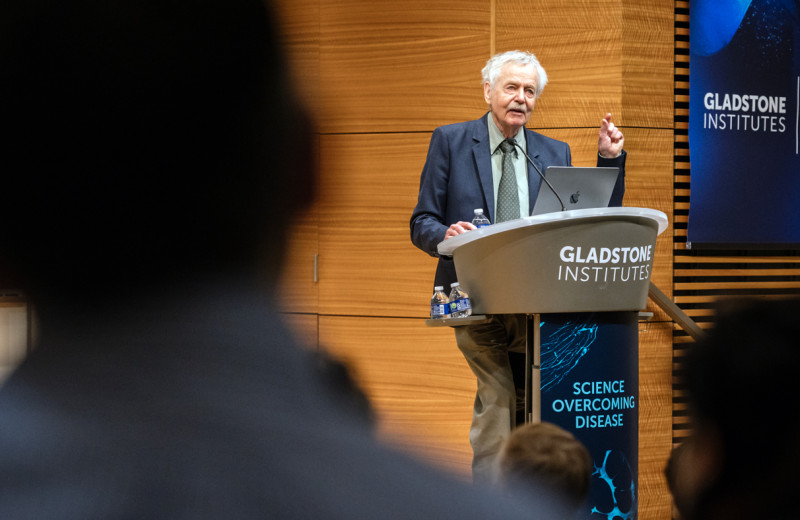Gladstone NOW: The Campaign Join Us on the Journey✕

SAN FRANCISCO, CA—July 5, 2012—Scientists at the Gladstone Institutes have discovered that environmental factors critically influence the growth of a type of stem cell—called an iPS cell—that is derived from adult skin cells. This discovery offers newfound understanding of how these cells form, while also advancing science closer to stem cell-based therapies to combat disease.
Researchers in the laboratory of Gladstone Senior Investigator Shinya Yamanaka, MD, PhD, have for the first time shown that protein factors released by other cells affect the “reprogramming” of adult cells into stem cells known as induced pluripotent stem cells, or iPS cells. The scientists—who collaborated on this research with colleagues from the University of California, San Francisco (UCSF)—announce their findings today online in Cell Stem Cell.
In 2007, Dr. Yamanaka discovered a recipe of specific proteins to add to human skin cells as a way to induce them into becoming iPS cells—which act very much like embryonic stem cells. Many see iPS cell technology as a new platform for drug discovery and the study of disease fundamentals—while avoiding the ethical issues surrounding research involving embryonic stem cells. But questions remain about the most efficient way to cultivate iPS cells.
“We've reinforced our hypothesis that the cell's environment is vital to the reprogramming process,” said Dr. Yamanaka, who did his postdoctoral studies at Gladstone in the 1990s, returning here in 2007 as a senior investigator. “We can now expand our understanding of cell development—and use iPS cells to model conditions such as Alzheimer's and heart disease.”
Normally when researchers convert skin cells into iPS cells, the cells rest on a special layer of materials in a petri dish. The layer includes “feeder” cells that provide nutrients required for the iPS cells to grow and reproduce. In this study, performed at the Roddenberry Center for Stem Cell Biology & Medicine at Gladstone, scientists generated human iPS cell lines by using a method in which the feeder layer secretes a protein called LIF. Dr. Yamanaka, who invented this so-called “Kyoto” method, also directs the Center for iPS Cell Research and Application at Kyoto University and is a professor at UCSF, with which Gladstone is affiliated. UCSF collaborators on this research include co-senior author Barbara Panning, PhD, and Karen Leung, PhD.
The researchers then analyzed LIF's importance in the growth of female iPS cells. Female iPS cells contain two copies of the X-chromosome, which is one of two sex chromosomes. While males carry one X and one Y-chromosome, females' two X-chromosomes could result in a potentially toxic double dose of genes—except for a unique evolutionary mechanism whereby one of the two X's is silenced in a process known as “X-inactivation.” This process, which occurs early during the development of the embryo, ensures that females, like males, have one functional copy of the X-chromosome in each cell. But exactly how X-inactivation happens is unknown.
To research this, Gladstone scientists generated female iPS cells on feeder layers without LIF and found that one of the X-chromosomes in each iPS cell remained silent. Those iPS cells that grew on a layer of cells with the LIF protein, however, grew with two activated X-chromosomes. Then, by taking a cell from a non-LIF cell layer and transferring it to a LIF-cell layer, the iPS cell's inactive X-chromosome switched on and became even more like embryonic stem cells. These results are crucial for future studies of how iPS cells grow and mature. And because this iPS technology lets scientists create stem cells from patients with a specific disease, this new finding could lead to a far-superior human model for studying disease and testing new drugs.
“These results will make it possible to readily generate stable, double-active, higher-quality X-chromosome iPS cells, and study the process more closely,” said Gladstone Research Scientist Kiichiro Tomoda, PhD, who is the paper's lead author ”Our findings also reinforce work from other Gladstone scientists showing that the cell environment is critical to the reprogramming process.”
Other scientists who participated in this research at Gladstone include Kirsten Eilertson, PhD, Mark White, Salma Sami, Bruce Conklin, MD and Deepak Srivastava, MD. Funding came from a variety of sources, including the California Institute for Regenerative Medicine, the National Institutes of Health, the Roddenberry Foundation and the L.K. Whittier Foundation.
About the Gladstone Institutes
Gladstone is an independent and nonprofit biomedical-research organization dedicated to accelerating the pace of scientific discovery and innovation to prevent, treat and cure cardiovascular, viral and neurological diseases. Gladstone is affiliated with the University of California, San Francisco.
A Sculptor of Modern Regenerative Medicine
A Sculptor of Modern Regenerative Medicine
Among his myriad accomplishments, Rudolf Jaenisch—winner of the 2025 Ogawa-Yamanaka Stem Cell Prize—was the first to demonstrate the potential of induced pluripotent stem cells to treat disease.
Awards Ogawa Stem Cell Prize Profile Regenerative Medicine Stem Cells/iPSCsDeepak Srivastava Selected to Deliver American Heart Association’s Distinguished Scientist Lecture
Deepak Srivastava Selected to Deliver American Heart Association’s Distinguished Scientist Lecture
Srivastava will present at the American Heart Association’s Scientific Sessions 2025 in New Orleans; the lectureship is a major recognition of excellence by the association.
News Release Cardiovascular Disease Srivastava Lab Genomics Stem Cells/iPSCsScience in Seconds | Researchers Pinpoint Key Gene Behind Heart Defects in Down Syndrome
Science in Seconds | Researchers Pinpoint Key Gene Behind Heart Defects in Down Syndrome
In this video, Gladstone scientists share how they used stem cells, gene editing, and AI to identify a gene driving heart defects in Down syndrome—and how reducing its levels in mice restored normal heart development, offering hope for future treatments
Gladstone Experts Cardiovascular Disease Data Science and Biotechnology Pollard Lab Srivastava Lab AI Big Data CRISPR/Gene Editing Human Genetics Stem Cells/iPSCs



